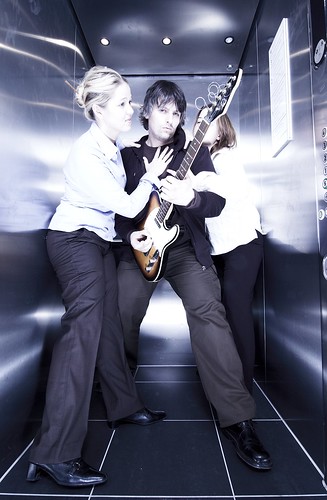Part II here.
Matthias:
"Gandevia and others have shown that by displacing skin - for example at the fingers - gives the patient the illusion that the finger has moved. The same thing happens when you vibrate tendons - depending on the context people think their limbs start moving. It seems from this line of research that our brain constructs a Virtual Reality Simulation of the body - a virtual body as it is often called. Do you think that the brain regards the virtual body being real and that problems in the real body (only) arise because of discrepancies between the virtual and the real body? What I mean by this is: the brain tries to adjust the real body so that it fits the virtual body?"
Diane:
That is a good testable treatment construct, I think. Butler has been thinking along these lines as well.
Matthias:
"What can patients do on their own to keep their virtual body flexible and healthy? What are some of the things you yourself do in everyday life to keep it fit?"
Diane:
Well, everyone knows that pain can arise when the real body gets impacted, jolted, injured as in a car accident, etc. Most people do not realize pain can arise through ordinary daily habits. I usually ask patients what their "default" positions are, the positions they adopt while being sedentary.
These positions often leave lasting impressions on the nervous system. For example, most people relax in the evening, sit with a leg crossed over the other. Many people always cross the same leg, have for years, never the other. Or they will pick a corner of the couch to watch TV from, and tuck their legs up to the side - always the same direction. Or lean on one elbow - always the same elbow.
I once treated a woman who had an enormous dint in the side of her leg from her other knee pressing in. You can learn to spot the sedentary habits from the impressions they leave on the actual body! But think what this must also do to their virtual bodies after awhile.
I make people aware of the need to observe themselves at home, become aware of their default positions, change them. I explain it simply - let them know that nerves need fed evenly from all sides or eventually they'll set up a distress call.
I don't teach "exercise" anymore, instead I teach sensory awareness, i.e., anything that will change sensory discriminative input into the neuromatrix. Change the relationship to gravity - lie down on the floor. Attend to breathing. Stay focused on the breathing and lengthen out an arm along the floor, see how it feels.
Do telescoping movements instead of stretching. Shorten and lengthen. Breathe. Feel what parts are trying to help and which ones feel as though they don't help, or resist. And don't worry about trying to make them do anything they can't seem to. Stop trying to override everything, just notice things, let them be, let them change by themselves, but keep checking on them periodically.
Do not cause more pain.
Practice moving without pain, practice what you can inside the comfort zone - there's lots to work on without trying to push the boundaries. Wait. Do small amounts frequently. Think of this work as feeding the nervous system.
Like a very young and cranky baby, it cannot absorb very much at a time. It needs your help and caregiving and attentiveness and feeding, but it needs small amounts frequently to turn itself around and thrive. A big "meal" once a day would be counterproductive, to say the least.
I use the example of learning to ride a bike - here's a complex motor skill that requires about three days to learn. All that's required is repeated exposure to the task, practice. Nothing is going to happen until that exposure has made its way all through every part it needs to go.
Patience and repeated exposure is all that is required.
Suddenly, on about day three or four, the task is accomplished - suddenly, the brain has figured out how to help your body achieve balance and coordination sufficient to ride a bike, and it's without effort. It's the same for learning to move without pain.
Matthias:
Diane – thank you very much for sharing these fascinating insights!
I hope more people will be inspired by your example.



3 comments:
Thanks Matthias and Diane
I wish I had more knowledge and could understand better about what you do. I've found that for me recovery is about what I can do for myself and not what can be done for me. This seems to be what you are saying Diane. In the past I've found hands on physical therapy unhelpful. The idea of becoming aware of what hurts and adjusting to relieve the hurt and being aware of self makes sense. It seems also that your method where the patient is engaged in the healing empowers the patient to help themselves.
jeisea
First, I'd like to thank you Matthias for your interest in my work, and for highlighting it as you have.
Jeisea, you said: "I've found that for me recovery is about what I can do for myself and not what can be done for me."
You are absolutely right about that, and right that it's what I was saying. I don't know what sort of hands-on work you had, but if it wasn't sensitive to any changes produced in you AND/OR if it wasn't what your particular brain needed in that moment in that context, then it was pointless if not counterproductive. Hands-on should be a service to a patient's brain/nervous system, not create more stress for it; there are some kinds of pain manifestations, some nervous systems so sensitized that hands-on treatment is definitely not a good first choice.
Diane
Post a Comment